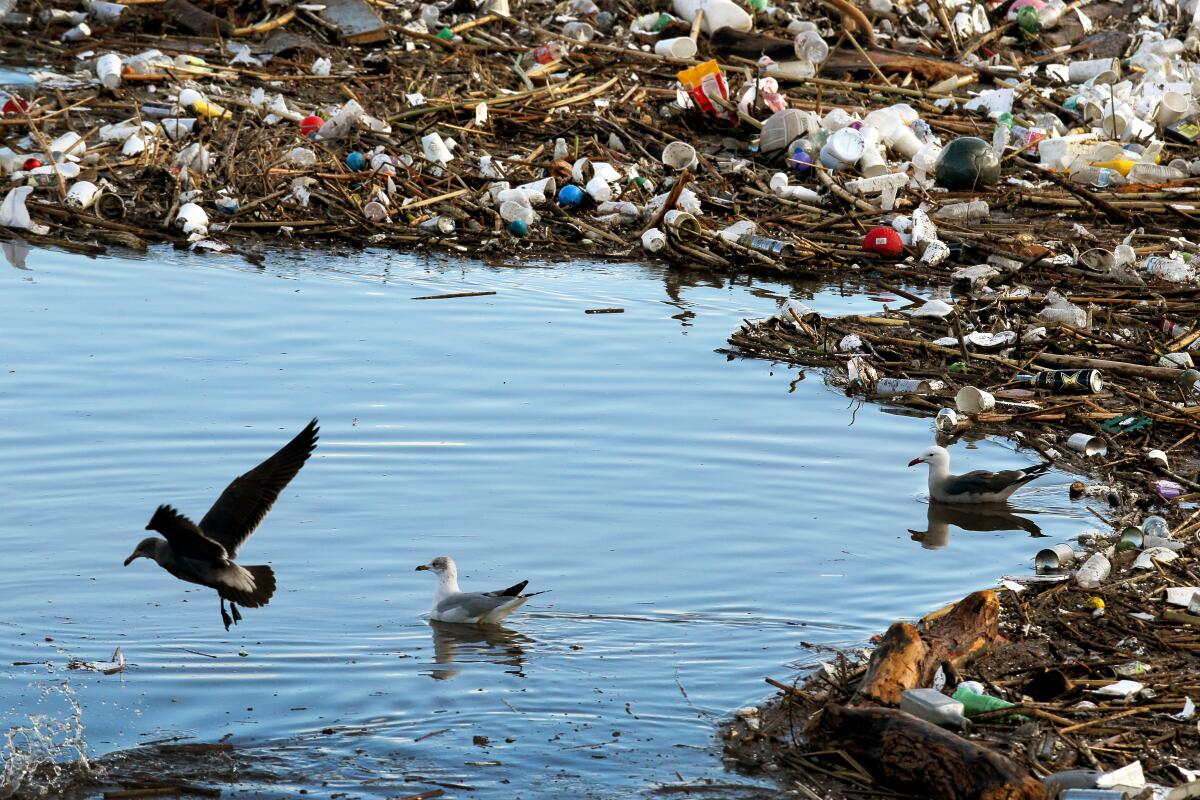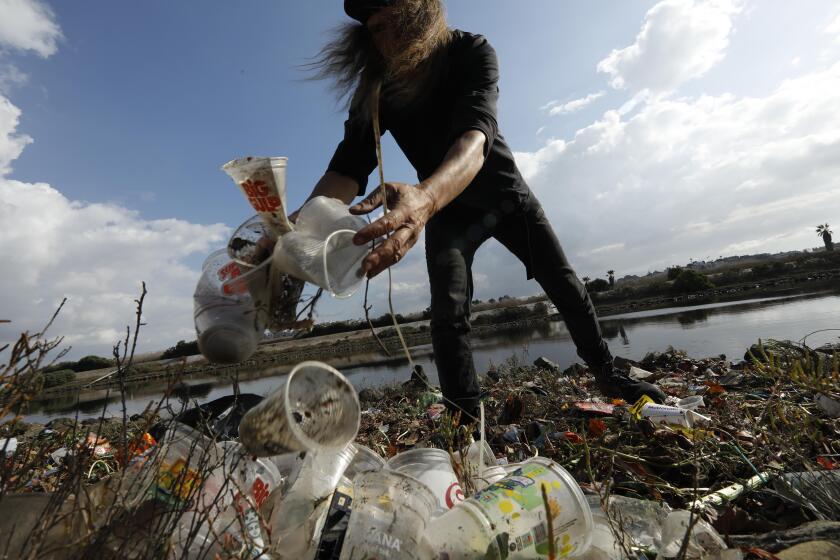Op-Ed: California needs to repeat history by passing new clean water laws

- Share via
The Porter-Cologne Water Quality Act, California’s state clean water law, passed in 1969 and became the model for the 1972 federal Clean Water Act. Nearly half a century after passage of the landmark federal law, it is time for both the state and the nation to assess progress and chart a new course. Once again, California is leading the way with Assembly Bill 377, a new bill introduced by Assemblyman Robert Rivas (D-Hollister).
Although new legislation is needed, the existing federal and California clean water acts have produced successes that should be celebrated.
Half a century ago, Ohio’s Cuyahoga River was so polluted that it literally caught fire at least 10 times. Today, the federal program that limits industrial pollution reduces toxic discharges by 700 billion pounds annually. One tangible result: The Cuyahoga River is now a destination for kayakers.
As a result of untreated waste, Lake Erie was famously dying in the 1960s, as were many of California’s bays, lakes and rivers. By 2020, both federal and state governments had invested nearly $200 billion in municipal wastewater treatment and other clean water strategies — dramatically reducing pollution from sewage.
Over the two centuries prior to the 1980s, wetlands were lost at a rate of 60 acres every hour in the lower 48 states. For much of this time, people did not value what some saw as bug-infested swamps. Now it’s understood that wetlands provide critical benefits, including flood prevention, fish and wildlife habitat, improved water quality and carbon sequestration. By the late 1990s, the rate of wetlands loss had been reduced by 77%.
California saw its own gains too. Fifty years ago, there was so much raw sewage in San Francisco Bay that it literally stank. Now, after major investments in treatment plants, dramatic water quality improvements are likely a key reason harbor porpoises returned to the bay. Along the Southern California coastline and around San Francisco Bay, ambitious restoration projects in recent years are reversing decades of wetlands losses.
But Californians can just as directly see the limitations of our water successes. Los Angeles-area municipalities are currently less than 10% of the way toward completing stormwater pollution reduction goals. As a result, rain events still release a toxic stew into rivers and onto the coast, including oil, metals, dangerous bacteria, pesticides, herbicides and harmful nutrients — as well as a staggering amount of plastic waste. On its current path, Los Angeles may not hit established water quality targets until as late as 2082 — 60 years behind schedule.
A new study from Heal the Bay shows that L.A. won’t achieve its collective clean water goal until 2082 — more than 60 years after a local deadline.
Furthermore, the federal Clean Water Act exempts agricultural runoff, and California’s water boards have made little progress in reducing agricultural pollution — now the largest source of water contamination in both the state and the nation. That pollution is the leading cause of contamination in California’s drinking water.
The collective impact of these clean water failures is sobering. California’s State Water Board found that 93% of the state’s lakes and coastal shoreline are impaired from a water quality perspective, as are 99% of its wetlands, bays and estuaries. Those impacts are seen in public health threats, beach closures and consequences to fish and wildlife.
To address the limits of state and federal law, AB 377 starts by setting a statewide target to eliminate water impairment by 2050. The bill would close loopholes in the state permitting program, such as inadequate monitoring and repeated extensions of compliance deadlines that have stalled cleanups. It would strengthen enforcement to ensure that all permittees comply with clean water standards. Increased enforcement will result in more fines. Those fines, in combination with an increase in funding provided by recently passed state legislation, will allow more dollars to be directed to cleaning up polluted waters — without increasing fees or taxes. AB 377 would not set new water quality standards — but it would give state regulators deadlines and new tools to get the job done.
This is ambitious legislation. So was the Clean Water Act. And ambition is called for, given the state of our waters and escalating threats from climate change. By setting this new path to ensure the health of the environment in our state, perhaps California will again point the way toward clean water across the nation.
Terry Tamminen is president of 7th Generation Advisors and served as secretary of the California Environmental Protection Agency under Gov. Arnold Schwarzenegger. He also founded Santa Monica Baykeeper and was its executive director for six years.
More to Read
A cure for the common opinion
Get thought-provoking perspectives with our weekly newsletter.
You may occasionally receive promotional content from the Los Angeles Times.











